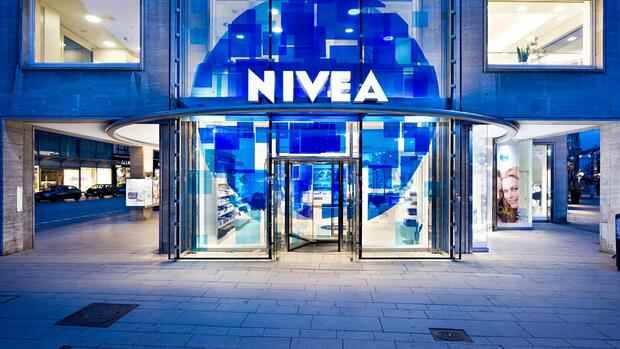CEO Warnery expects tougher resistance for the second half of the year.
(Photo: Beiersdorf)
Dusseldorf The Nivea manufacturer Beiersdorf is growing despite rising costs and a drop in consumer spending. In the first half of the year, the company increased its internal sales by 10.5 percent to almost 4.5 billion euros. Before interest and taxes, Beiersdorf achieved a profit (EBIT) of 710 million euros – 19.3 percent more than in the first half of 2021. The group announced this on Thursday morning.
Beiersdorf has thus grown faster than analysts had expected. “2022 has been a successful year for us so far. In an increasingly challenging environment, Beiersdorf continued the strong growth momentum from the beginning of the year in the second quarter,” said CEO Vincent Warnery. The company, which is majority-owned by the Herz family’s Maxinvest Holding, was back in the leading index Dax in the summer after ups and downs.
The growth was primarily driven by the core brand Nivea, which accounts for the majority of sales. Nivea grew organically by 11.7 percent in all product categories, especially sun care. Here the group is benefiting from the hot summer and the increase in tourism as a result of the relaxation of the corona virus.
Stronger sales of deodorants and shower gel also drove growth. Nivea has been able to regain market share in Europe for a long time. The core brand also grew faster than before the corona crisis.
Top jobs of the day
Find the best jobs now and
be notified by email.
The figures indicate a trend reversal at Beiersdorf. In the past decade, the group had grown neither in profit nor in sales. For several quarters in a row, growth has now been stronger than expected by the market. Since the beginning of the year, the share has increased by more than ten percent, even after the presentation of the half-year figures, the paper was slightly up at a good 102 euros before the market.
New Nivea strategy is obviously paying off
From the group’s point of view, the new Nivea strategy is paying off. The group is concentrating on fewer, more innovative products. Instead of launching new products in individual markets as before, there are more global launches. The group tries to address consumers directly with personalized online advertising and no longer relies on classic TV advertising.
In addition, Beiersdorf relies on higher-quality products that generate higher margins. “We want to focus more on skin care, especially for the face,” Grita Loebsack, the board member responsible for the Nivea brand, recently told the Handelsblatt.
>> Read more: New Nivea strategy: fewer products, higher prices, more margin
The Tesa adhesives division grew more slowly than the consumer business. The brand achieved organic sales growth of 5.4 percent in the first half of the year. In the spring, the division was hit hard by the lockdowns in China. According to the group, however, business recovered again and recorded stronger growth again in June.
The adhesives area is the smaller business for Beiersdorf, but the more profitable. Tesa achieved a return on sales of 19.1 percent, the area for consumer goods comes to 15.1 percent.
Forecast for the second half of the year confirmed
CEO Warnery expects “additional headwind from economic and political tensions” for the second half of the year. Overall, the group confirms its forecast. Accordingly, revenues should grow organically in a range of between four and six percent. As announced, the operating return should be at the previous year’s level of 13 percent.
In the coming years, Beiersdorf wants to grow faster than the market – i.e. more than four to five percent. From 2023 onwards, the margin should increase by 0.5 percentage points every year, the group recently announced as a target at a capital market day.
Like all consumer goods companies, Beiersdorf is struggling with rising raw material costs and gaps in the supply chains. According to the group, they want to have passed on 80 percent of the increased costs by the end of the year. So far, the price increases have not resulted in customers switching to other products.
Like Beiersdorf, the competition has also succeeded: the British consumer goods group Unilever (Langnese, Dove) and the US competitor Procter & Gamble (Ariel, Pampers) have recently also increased more than expected. While Unilever raised its growth forecast, Procter is more pessimistic about rising costs. Persil manufacturer Henkel will present its half-year figures next Monday.
More: Consumer goods companies are at risk of missing their plastic targets
